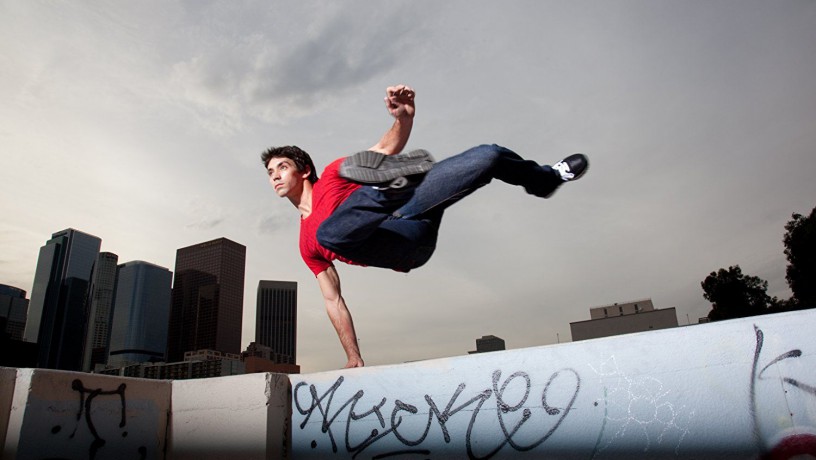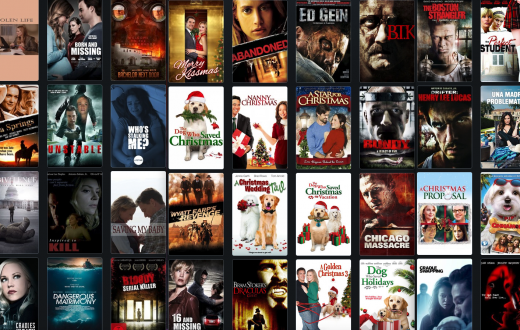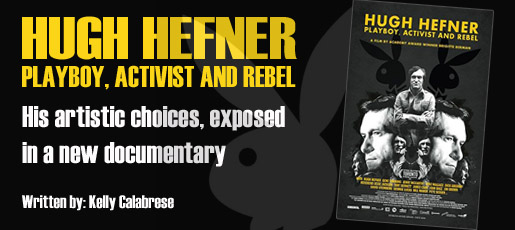If you like action and fight sequences, chances are you’ve seen stuntman Matt “Matty” Berberi’s work. Let’s see… The Matrix Resurrections, Westworld, Star Trek: Picard, Space Jam: A New Legacy, just to name a few.
Planning, coordinating and rehearsing are just some of the steps I thought of, but Matty really drills down to the very core of what goes into a scene that requires stunts.
As part of the fight team on The Matrix Resurrections (aka The Matrix 4), Matt Berberi helped train the cast. Click HERE to see Matty in action behind the scenes with actress Ellen Hollman rehearsing a fight scene.
So actors, here’s what you’re in store for if you get a job requiring stunts!
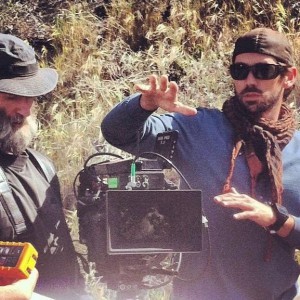
You’ve been designing fights and action sequences for well over a decade. How did you get started in the stunt business?
I started training Chinese Kung Fu and Wushu when I was a kid. As I got more into it, I started watching a lot of Hong Kong action films. Jackie Chan, Jet Li, anything and everything… I used to go to Chinatown on the weekends and buy videos of whatever new Hong Kong action film had come out recently. I always thought I was going to be a martial arts instructor when I got older, but when I learned that being a stuntman was an actual job I pretty much set my mind on that. The irony is that now, as a fight coordinator, one of the largest parts of my job is teaching martial arts.
After high school I moved down to LA to pursue stunt work. My first major stunt job was actually on a film in Vietnam, called The Rebel. I was training at a Wushu school in Orange County at the time and a senior classmate of mine, Johnny Nguyen, was an actor in Vietnam. He and his brother had written a screenplay that he would star in and his brother, Charlie, would direct.
I was going to Vietnam that winter to compete in the Wushu World Games and one day after training Johnny asked me if I wanted to stick around after the competition was finished and work as a stunt man on his film. I spent the next three and a half months in Vietnam and we shot all around the country. Johnny and the Vietnamese stunt team gave me a crash course in stunts and fighting on camera. It was such an incredible experience that I’ll always cherish.
What’s the difference between a “Stunt Coordinator”, “Fight Coordinator” and a “Fight Choreographer”?
A stunt coordinator is the head of the stunt department on a film and is responsible for overseeing and setting up all the stunts. That encompasses everything, including but not limited to fight scenes.
Fight coordinators are little more of a specialized position. We get hired to focus on the fight sequences in particular. Not all films have a fight coordinator but you tend to see it on a lot of fight heavy movies. It’s the fight coordinator’s job to take the sequence that’s written on the page and help to deliver it as a final product. You start out with choreographing a sequence with your team and usually then shoot a previz (the process in pre-production of visually mapping out scenes in a movie) for the director and higher ups to sign off on. At the same time we are bringing cast in to train basic movement and choreography.
Read the NYCastings interview with Ellen Hollman!
Later, once sequences are signed off on, we teach them the specific choreography that pertains to that sequence. On set I’m usually behind monitors paying attention to the performance. That entails giving notes, answering questions, and helping to fix any issues that arise while shooting.
A fight choreographer is a little more of an ambiguous job. Sometimes the fight coordinator is the choreographer, sometimes you have one or more choreographers on a larger project. A lot of times your fight choreographers might also be the stunt doubles or your core stunt team, especially on a fight-heavy film. At the end of the day it’s a very collaborative process. So while you may have one specific person that is in charge of choreographing something, everyone will weigh in and have thoughts and ideas that may help elevate the fight scene.
You worked on The Matrix Resurrections. Give us a blow by blow of what your job was on a daily basis. Also, share a story!
I was part of the fight team on The Matrix Resurrections. I think there were about 8 or 10 of us on the fight team under our stunt / fight coordinator. Our usual day of work consisted of helping to create, rehearse, or revise sequences and previz-ing them, and training cast. Each day we’d have around five or more cast members come in and we would help run them through drills and choreography that our fight coordinator had planned out.
Gosh, there’s so many crazy stories from that film but I think the thing I remember the most was when we were working nights on a rooftop in San Francisco. There was a scene where there were two helicopters flying around and they were supposed to shoot guns at one of the characters. The pilots were flying the helicopters in between skyscrapers in the middle of San Francisco in the financial district and hovering right at our eye level. They must have been less than 20 feet from the buildings. There was all this noise from the helicopters and gunfire and a whole fight scene going on closer to camera and I just remember thinking, “Holy crap, we’re filming The Matrix”. It was a surreal moment.
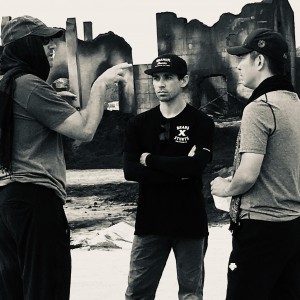
How do you come up with different fight sequences for different films without repeating the same moves?
It does get hard not to repeat the same moves in sequences and it’s something that probably everyone that choreographs fights struggles with. When I choreograph a sequence, my primary focus is on character and story. I start with creating a style of movement for the character. Usually the director will have a vision, and the actor will bring a lot of insight into the character as well. I like to listen to everyone’s input and absorb it, and then formulate a style off that, and let the actor or performers have fun with it.
On top of that, I try to watch where trends are going and stay ahead of the curve. You have to constantly train new styles of martial arts and always seek out new and unusual things to keep expanding your lexicon of movement.
How does a production determine if they want a stunt double or if the actor themselves will do the stunts? Is there a rating scale of not-difficult to extremely-difficult that they use? Do you have meetings (that are NOT on set) to review stunts?
There are a lot of discussions with insurance and studio safety that happen before we shoot a sequence to determine what is safe for an actor and what would require a double. There is a ton of planning that goes into stunt and fight sequences.
If it’s scripted as a stunt we will always bring in a stunt double. Sometimes they’ll just test and line things up for the actor before we shoot, but we always have them there. I try to use the cast as much as safely possible when we film a fight scene. The more prep time you have with cast the more comfortable they’ll be performing a big fight sequence themselves. I use my prep period before a sequence to not only train the cast, but also get to know them both in personality and physical abilities. That helps me gauge if or when we might need a double. Some actors are more comfortable or experienced with action, or we have them for months of prep so we can get them really dialed in. Others might have some limitations or reservations about doing certain things or movements.
See Matt Berberi’s Stunt Show Reel!
There’s several scenarios where we may use a double. The main one is if there is a safety issue. Sometimes there’s a hard hit like crashing through a window, or something that is very specialized like a big wire move or a high fall that we’d have to use a stunt double for. Sometimes there’s just a physical limitation or a reservation an actor might have and so that would be another instance we may need to use the double for. But usually these things are brought up and planned out before we get to filming a sequence, so that everyone is on the same page.
For the additional photography for Infinite there was an added scene at the end of the film where we discover a young boy is the reincarnation of the main character, Treadway. SAG-AFTRA has very specific rules about how long you can work actors under the age of 18, and on the shoot day we were quickly running out of time. So we had to economize the shot-list to get all of the coverage of the fight using our actor, Gilbert Aguirre, who was a teenager, and then later on that day we picked up some wide or top shots with a stunt double. If we had more time we could have used Gilbert for the entire fight, but we didn’t so we had to come up with a new plan.
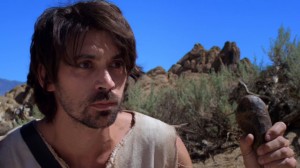 Do you, the production or any company you work for, have to have a special type of insurance in order for you to work on the show?
Do you, the production or any company you work for, have to have a special type of insurance in order for you to work on the show?
The production and cast all are insured under the production’s insurance policy. Part of the job of a stunt coordinator and a fight coordinator is making everything safe so that there is minimal risk filming these action sequences while still making them exciting and appearing out of control on screen. Like I mentioned earlier, there are a lot of discussions with insurance and safety about how you plan to set up a stunt or a fight sequence and make it safe before it’s signed off on and filmed.
Was there anything in your childhood that reflected that you would go into the entertainment / stunt field as an adult? What did your family say to you when you told them you were going into the stunts business?
I was a really active kid growing up and played a lot of sports. Soccer, swim team, ice hockey, football. Once I got into martial arts though it really took over and became my main focus. Chinese Wushu is a performance based martial art. You do a routine and are judged and given a score based on your performance. I think that lent itself very well to me transitioning into stunts and wanting to perform on camera.
Neither of my parents were in the business and I think they were very surprised and a bit concerned when I told them what I wanted to do. I think it came from a place of protection. They wanted me to go in a field of work they could give me advice on and they had no understanding of the film business. But they supported my decision and always told me as long as I was happy with what I was doing that their support would continue.
Were there any times on the job as a stunt / fight worker that you anticipated problems and if yes, what were they and how did you prevent them?
As a fight coordinator, every single day on set is a day that you have to anticipate and solve problems. There’s so much pressure to get the shots the director needs and make their day, and even the most well oiled machine breaks down when it gets a wrench in the gears. Most days, my drive to work is spent thinking about what can go wrong and what my backup plan is for that day. And sometimes you get hit with a tropical storm and half the cast gets food poisoning and B Camera falls in the pool. On those days you just have to laugh, take a deep breath, and come up with a plan C, quick.
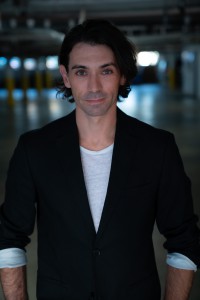
What makes you unique?
Hmm, something unique about me? People are usually pretty surprised to hear that I went to college in Japan and speak near-fluent Japanese. But I guess that’s a whole other interview isn’t it?
Anything else you want to say?
I just wrapped up fight coordinating Season 4 of HBO’s Westworld right before the winter hiatus, so I’ve just been enjoying the down time from that. I’ve been using it to prep a short film that I’m directing at the end of January. It’s a heartfelt dramatic piece so I’m really excited to try something new and different!

